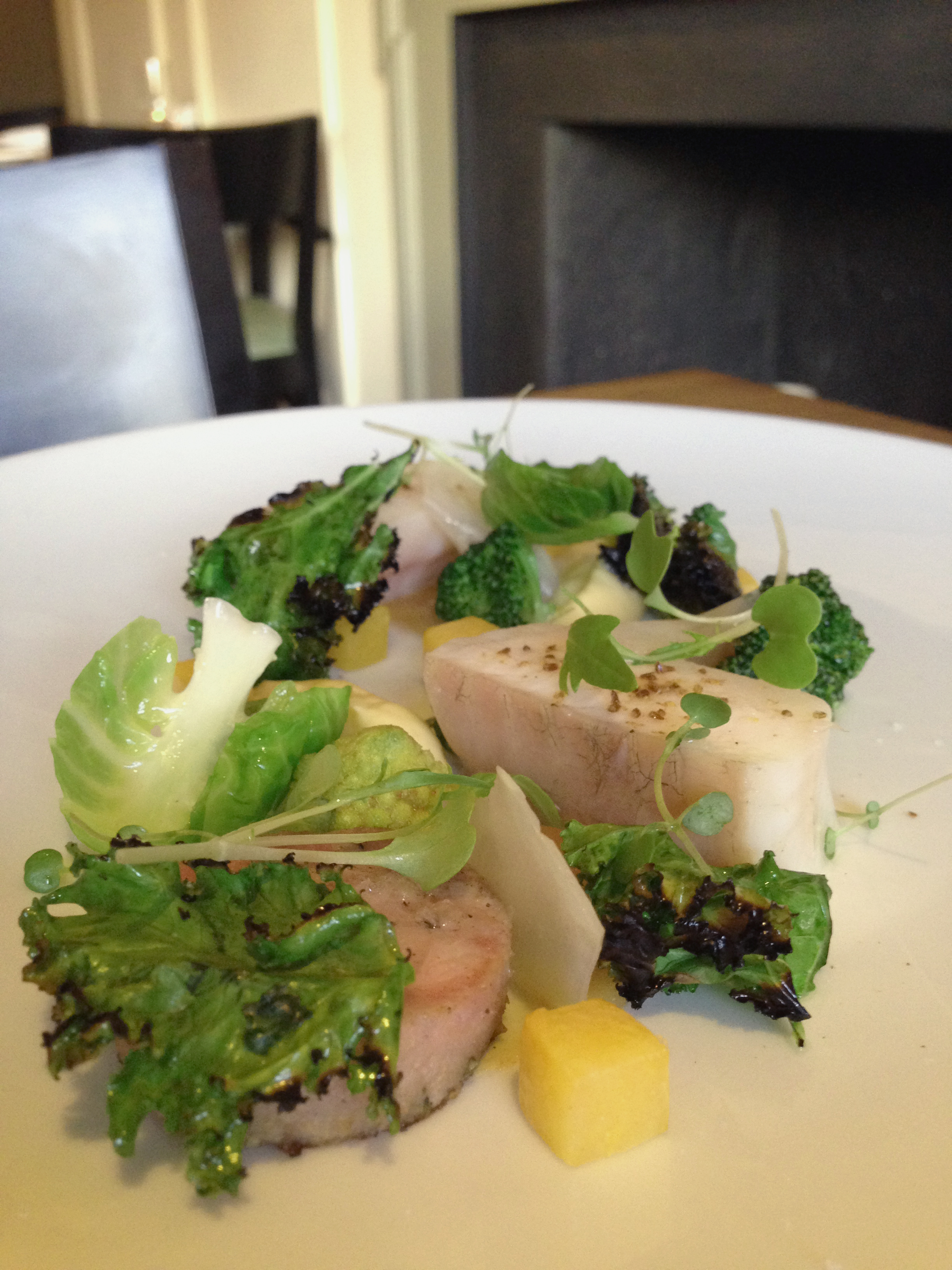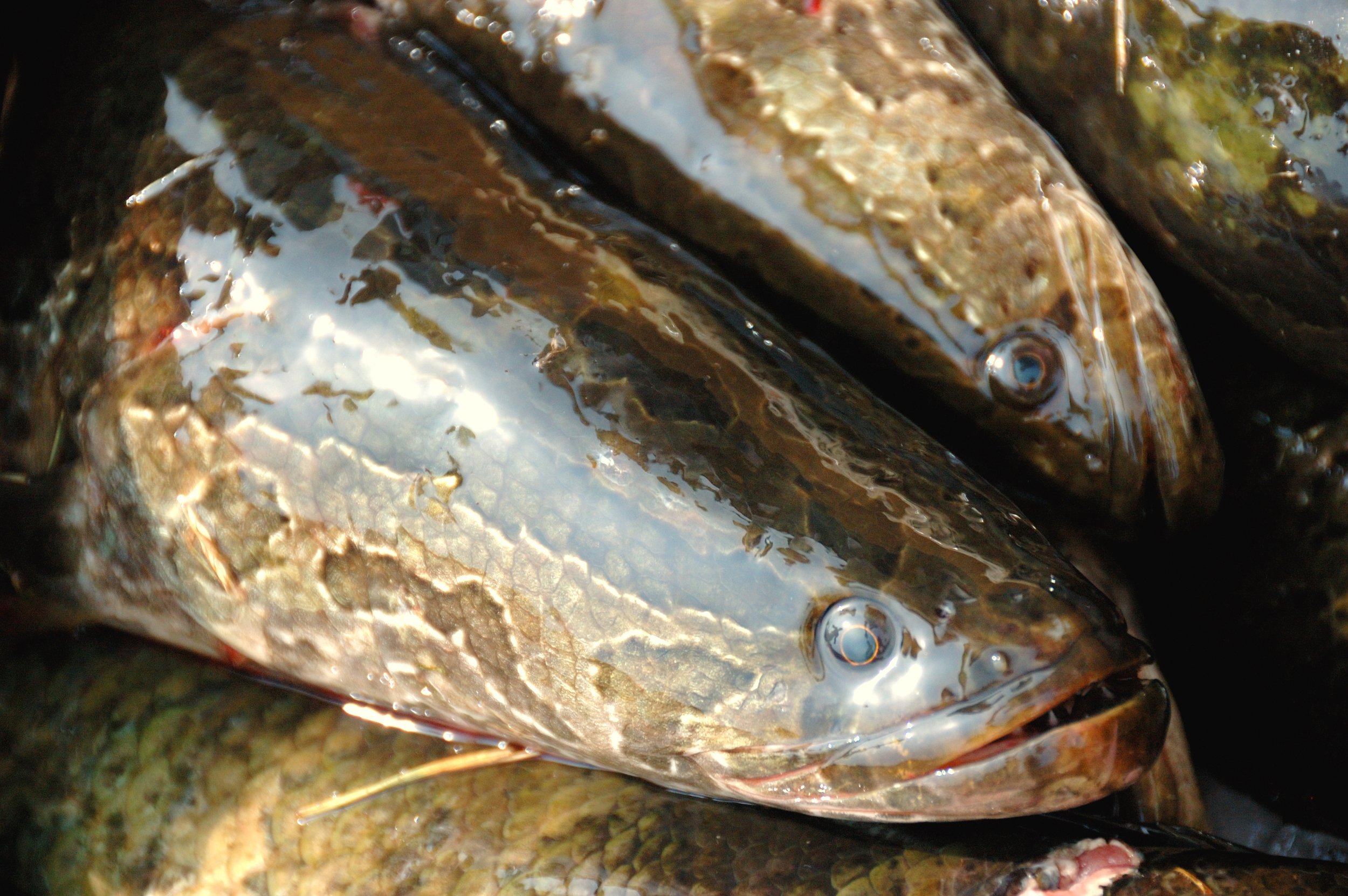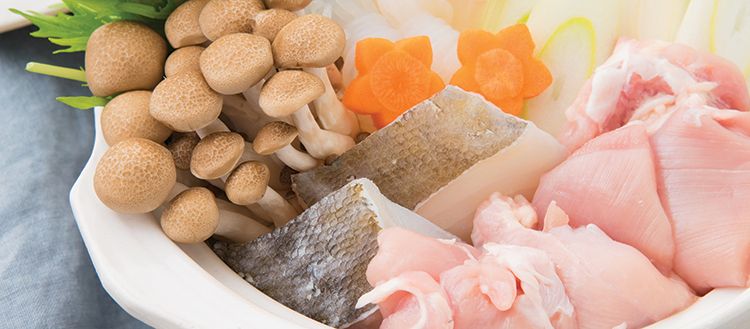|
In just a few short years, the snakehead fish has come a long way. Its native habitat is in Africa and Asia, but by 2002 it had found a way to travel thousands of miles to a pond in Crofton, Md., (although no one knows how it got there). In a couple of years the fish—which can crawl out of the water and along the ground to find a new home—had traveled to Philadelphia, Virginia and Delaware. But its final home may be on your plate. |
Not only are fish walking into new waters, but as more people travel or order food and products from other countries, they are unintentionally bringing that local flora and fauna to America—with costly economic and ecological consequences. An invasive species is defined as a plant or animal not native to the area that can unbalance local ecosystems by multiplying rapidly and crowding out native species. These invasive species, such as the snakehead fish, blue catfish, flying carp (or the plants lamb’s quarters or wild garlic), have grown unchecked and cost the U.S. more than $34 billion a year in environmental damage, lost crops or in efforts to control the problem, according to the U.S. Fish and Wildlife Service.
As they spread across the U.S., some experts are saying that if you can’t beat them, eat them. In Philadelphia, the snakehead fish began making a most unwelcome entrance into local waterways around 2004. They can grow to three feet and indiscriminately eat plankton, insects, carp, frogs and even small mammals, and devastate local ecosystems. Their mottled skin, sharp teeth and strange appearance even spawned the 2004 movie Frankenfish. After eating most living creatures in any given area, snakeheads can climb out of the water for short periods of time to find a new home to pillage from.
 Grilled snakehead, celeriac, sourdough, bone marrow emulsion, pickled juniper | Photos courtesy Mica restaurantBut despite its slimy skin and frightening exterior, snakeheads taste a lot like swordfish, Philadelphia restaurant owner and chef Chip Roman says. His restaurants, Mica in Chestnut Hill, and Blackfish in downtown Conshohocken, Pa., serve invasive species such as snakehead, blue catfish and flying carp to rave reviews. He also conducts “snakehead tastings” at Mica regularly using multiple cooking methods. The results?
Grilled snakehead, celeriac, sourdough, bone marrow emulsion, pickled juniper | Photos courtesy Mica restaurantBut despite its slimy skin and frightening exterior, snakeheads taste a lot like swordfish, Philadelphia restaurant owner and chef Chip Roman says. His restaurants, Mica in Chestnut Hill, and Blackfish in downtown Conshohocken, Pa., serve invasive species such as snakehead, blue catfish and flying carp to rave reviews. He also conducts “snakehead tastings” at Mica regularly using multiple cooking methods. The results?
“It … is quite good,” Roman says, adding that he was surprised at how good snakeheads tasted when he first tried them a few years ago after hearing about them on the news.
Roman said his goal is to get more restaurants serving invasive species, and more diners eating them to help control their numbers and hopefully eradicate the species. And while Roman enjoys serving snakehead, he hopes that one day there won’t be any for him to sell to patrons.
“It’s a way to help the environment and get rid of some of these invasive species while giving diners something unique,” he says.
 Poached snakehead, applewood butter, brassicas, breakfast sausage, caraway | Photos courtesy Mica restaurantSome Philadelphia residents aren’t content to find their invasive fare at a local restaurant. Leo Sheng, a 24-year-old physics student at Temple University, spends his spare time fishing for snakeheads in the nearby Delaware and Schuylkill rivers. And when he catches them, he cuts them into thin strips and fries them in flour, using salt and pepper to enhance the flavor. In some cultures, the snakehead is thought to have healing properties, but Sheng knows one thing for sure: they make a great meal.
Poached snakehead, applewood butter, brassicas, breakfast sausage, caraway | Photos courtesy Mica restaurantSome Philadelphia residents aren’t content to find their invasive fare at a local restaurant. Leo Sheng, a 24-year-old physics student at Temple University, spends his spare time fishing for snakeheads in the nearby Delaware and Schuylkill rivers. And when he catches them, he cuts them into thin strips and fries them in flour, using salt and pepper to enhance the flavor. In some cultures, the snakehead is thought to have healing properties, but Sheng knows one thing for sure: they make a great meal.
“Snakeheads are not only good eating, but also safe to eat,” he says.
John Klavitter, the National Invasive Species Program Coordinator at the U.S. Fish and Wildlife Service, has seen a growing movement of people eating invasive species, as well as restaurants adding them to their menus. This “invasivore” movement not only reduces the numbers of invasive plants and animals, but boosts awareness of how damaging they are to local environments.
“The biggest thing is awareness, but at some level it can make a difference,” Klavitter says. In February, the Fish and Wildlife Service released its first guide to eating invasive species to let everyone know they are not only edible, but can be tasty, too.
“If you have the right spices and the right way to prepare them, they are delicious,” Klavitter says.
John Rorapaugh, the director of sustainability at seafood supplier Profish Ltd. in Washington, D.C., said that although the company only began selling snakehead fish and blue catfish about three years ago, sales have been brisk. The company supplies the invasive fish to restaurants in Philadelphia, D.C. and New York City.
The company sold about 7,000 pounds of snakehead fish and 400,000 pounds of blue catfish last year, says Rorapaugh—an impressive jump from having no market at all a few years ago.
“A couple years ago, I said we have a real problem with these [blue catfish] and we should create a commercial market for it,” he says. “It began as a labor of love, but now we are on pace to beat all previous years in sales.”
He said while the blue catfish has a good taste, it has infested the waterways along the East Coast, and in some cases accounts for 75 percent of the fish by weight in certain rivers. The catfish end up crowding out and eliminating the native fish in the area and pushing down supplies of native fish. Catching them is relatively easy—the blue catfish are surrounded by nets, then hand-scooped using smaller nets. All the other fish are thrown back alive.
“That is why it’s so important to help curb the population,” Rorapaugh says. “So go ahead and have an invasive meal.”




